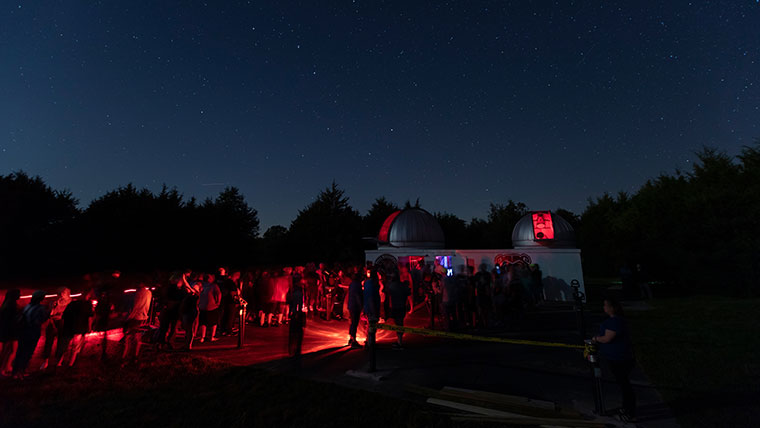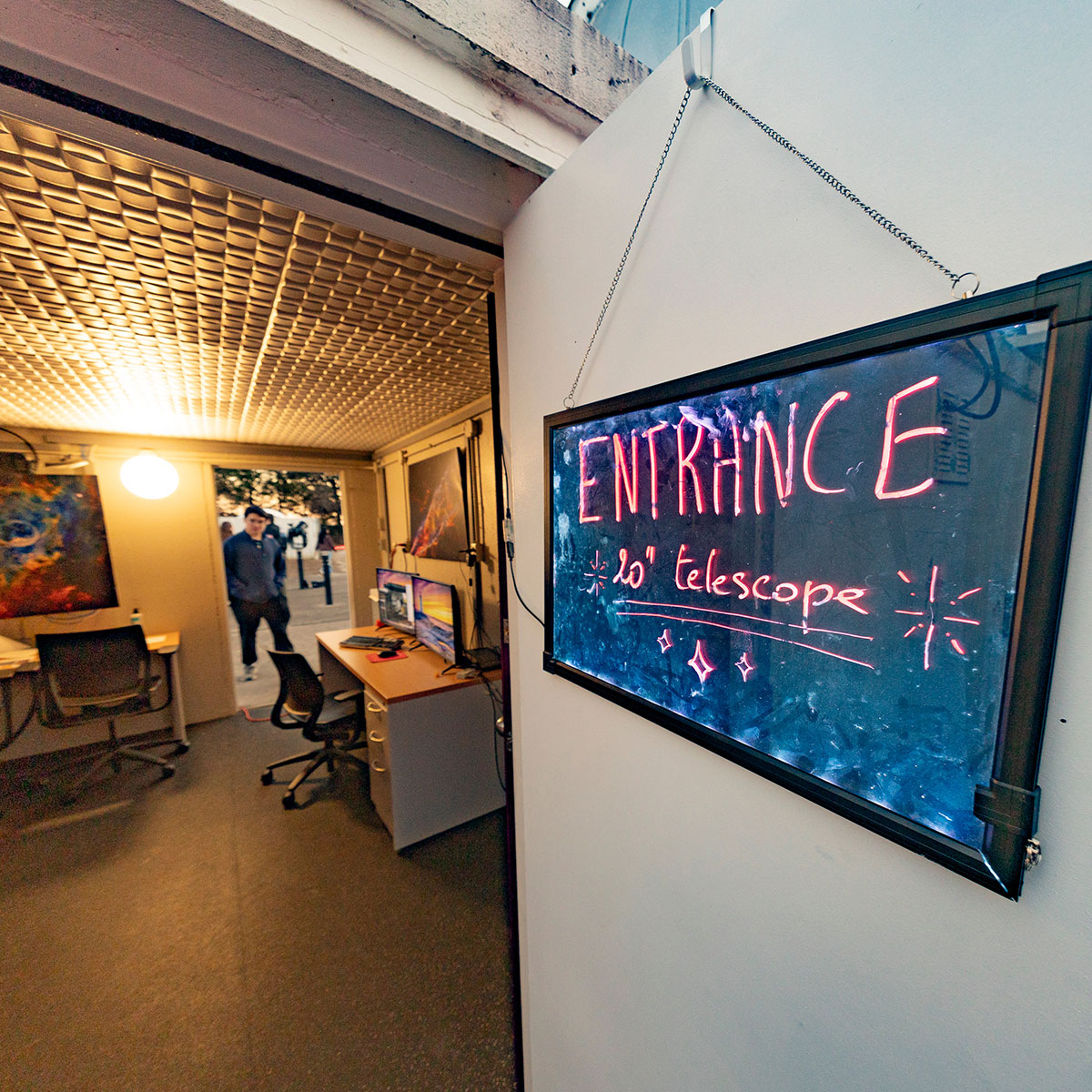-
M27 - Dumbbell Nebula
-
M31 - Andromeda Galaxy
-
M17 - Omega Nebula
-
M20 - Trifid Nebula
-
Helix Nebula
Baker Observatory
Gaze into the galaxies
Explore the stars, moon and planets at the William G. and Retha Stone Baker Observatory.
Originally established in 1977, the observatory is the research hub for physics-astronomy students and serves to promote astronomy to the public.

Private group tours
We hold private group tours for schools, science and other clubs; businesses; families
and summer camps.
The tours can be organized either during the day or night. You'll get a tour of the
grounds and the observatory, and you'll get to experience a telescope viewing of celestial
objects.
For rates and tour scheduling, please contact the department at 417-836-5131.

Want to contribute to astronomy at Missouri State?
Make a world of difference in educating future astronomers.
Help us reach our fundraising goal to build a new education building on the site of the Baker Observatory. To donate or ask questions, please contact Dr. Robert Mayanovic at 417-836-5606.
Use our equipment
Our facility comes equipped with state-of-art tools and technology.
Telescopes
You can use any of our three permanently mounted telescopes:
- 0.5-meter (20") diameter Planewave Cassegrain reflector on a Direct-Drive mount
- 0.4-meter (16") diameter Meade Schmidt-Cassegrain reflector
- 0.3-meter (12") diameter Meade Schmidt-Cassegrain reflector
CCD detectors
There are a number of charged-coupled device (CCD) detectors used on telescopes:
- An Apogee Instruments, Inc. 1024x1024 pixel thermoelectrically-cooled ALTA U47/F47 cameras.
- SBIG ST-6, 7, and 9 CCD cameras are used on student telescopes.

Capture your observations
Visit the Astronomical Image Analysis Laboratory (AIAL) in Kemper 200 to get a closer look at the images you took at Baker Observatory.
What are CCD images?
CCDs are used by most observatories to record images and spectra of astronomical objects. CCDs are manufactured under stringent procedures to produce scientific-grade detectors.
- Image Reduction (Calibration)
- Bias or zero-duration exposure subtraction
- Dark (thermionic emission) subtraction
- Flat field correction
- Image Analysis
- Measurement of star brightness
- Measurement of spectral line shapes
The way in which the brightness and spectral lines of a star change with time can be used to determine important physical properties.
What have we seen?
Take a peek at some of the nebulae and galaxies we've spotted.